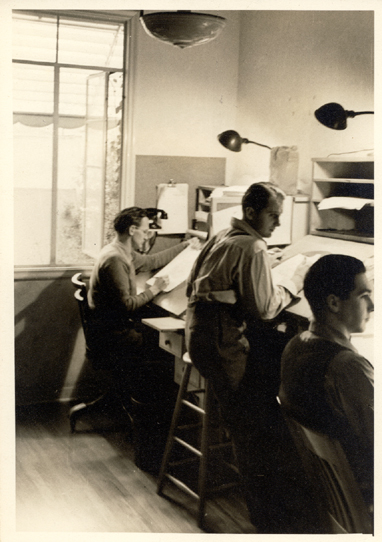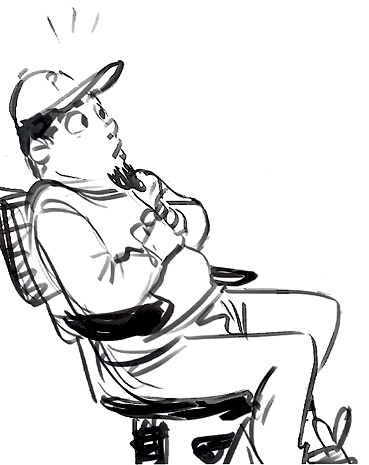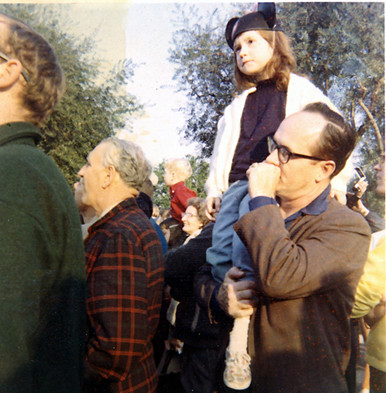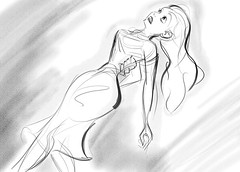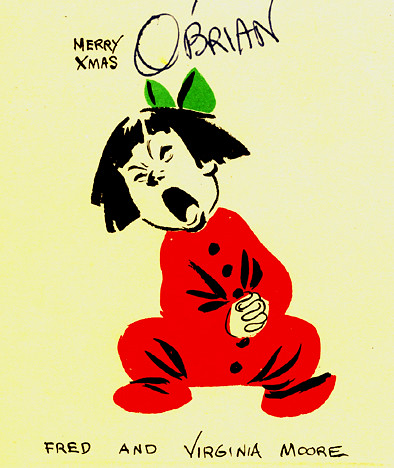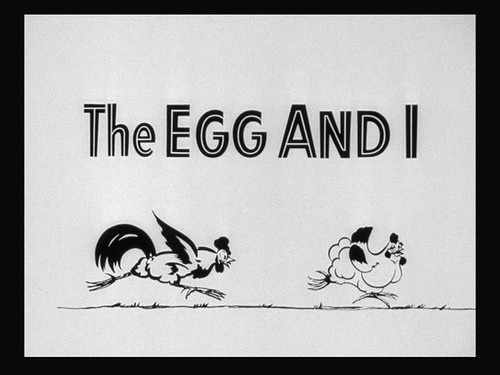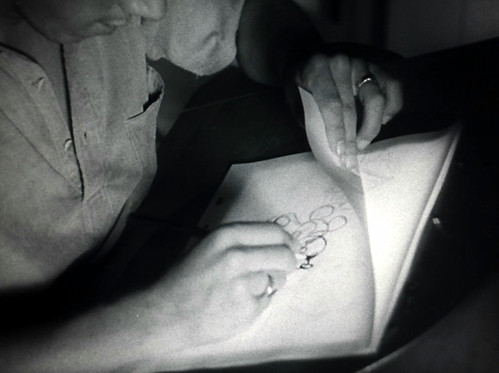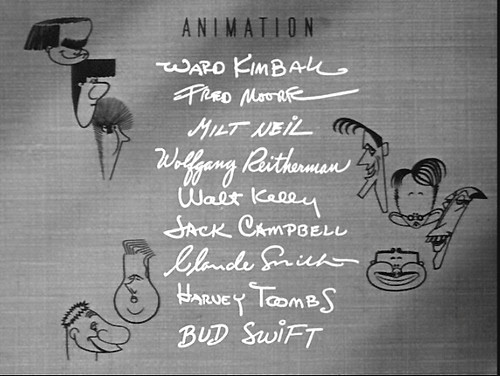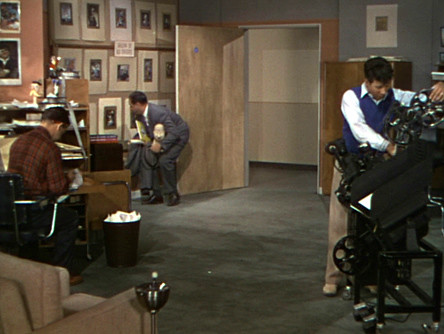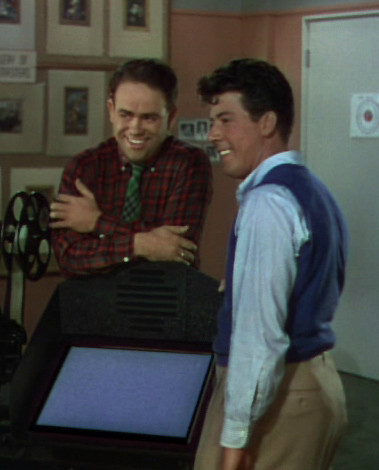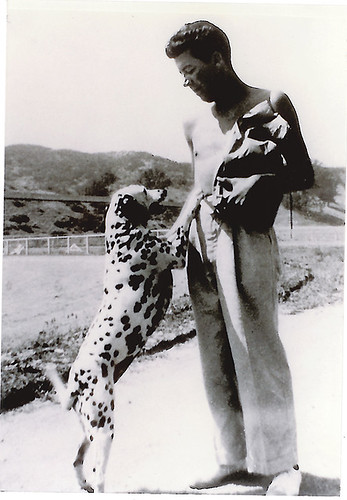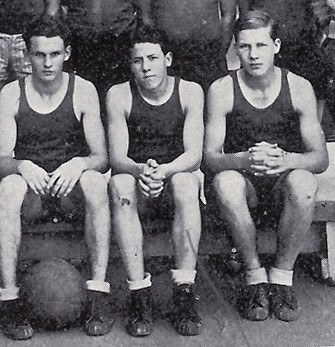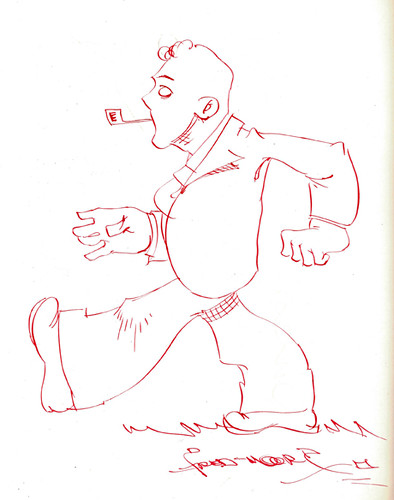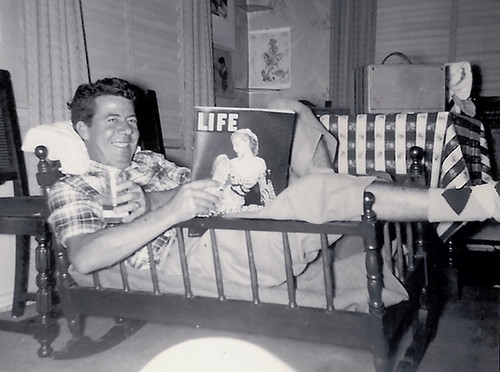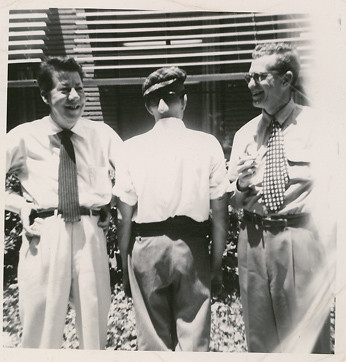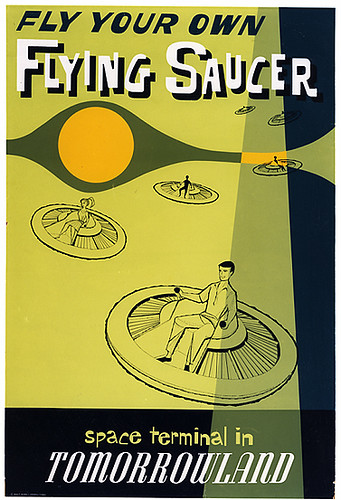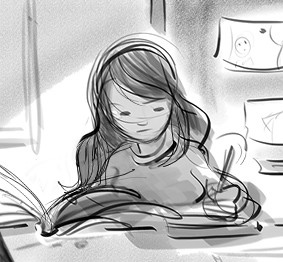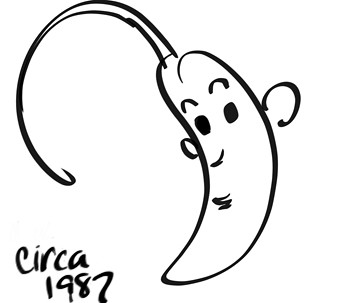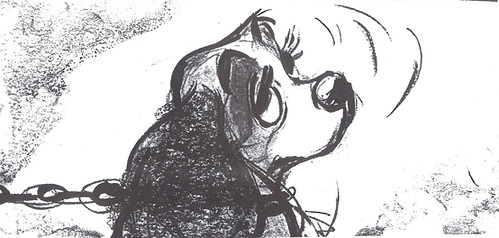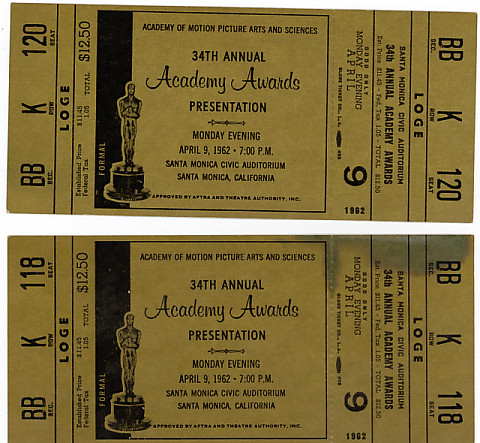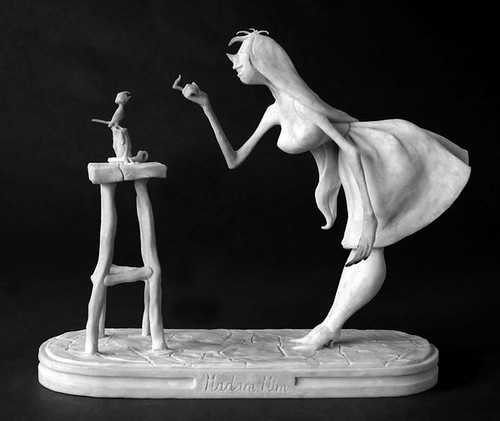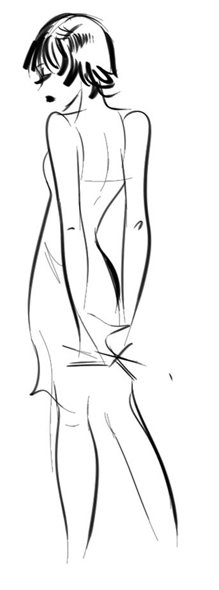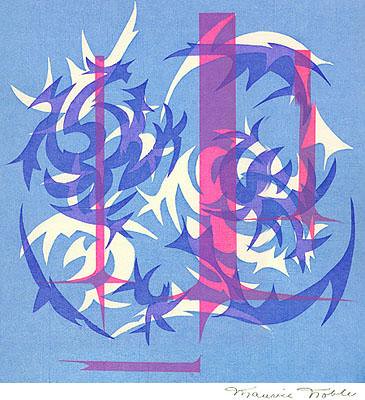 "Kettle Drum", by Maurice Noble/courtesty of the nobletales.com website
"Kettle Drum", by Maurice Noble/courtesty of the nobletales.com websiteCourtesy of Jeff Pidgeon's latest entry on his blog, I'm passing along a Publisher's Weekly reprint of
an article on Scott Morse's "Noble Boy", his graphic memoir of Maurice Noble. I hear Scott will be at APE up in S.F. the weekend of April 8-9 unveiling this long-awaited "picture book" fantasia-riff on the master.
When I went to work at Turner Feature Animation's development wing, it was in an unprespossessing building on Olive Street in Burbank, right next to a dentist's office and the Talleyrand, a time-warp of a restaurant. There were about four projects aborning at Turner: "The Red Shoes", "Wolves", "Ray Gunn", and a "pirate musical". A very long,
long pirate musical with about 45 characters in the main cast. They call it development hell for a reason, folks.
For the first year or so at Turner I was put on this pirate project(my second year was spent on a more interesting one, "Ray Gunn"-from the ridiculous to the sublime!). The main attraction of the pirate thing was the chance it gave me to work closely with Maurice, show him my stuff,
and to peek over Scott Morse's shoulder, painting away like a madman. Lou Romano, Ricky Nierva, Don Shank, Mike Stern and god only knows how many other amazing talents were in and out of Maurice's office on a regular basis too, no matter what project they were engaged on, for the advice, occasional goodnatured browbeating--and
always, the sheer pleasure of Maurice's expansive company.
At one point I shared an office with Scott, which gave me an opportunity to glimpse him at work. His metier was doing small paintings("comps"), using Cel-Vinyl paint in squeeze bottles, applying theories and techniques that were his own, and incorporating things Maurice had shown him at Chuck Jones Productions.
Watching Scott do his seemingly effortless array of scenes, all in beautiful color schemes and composition was an education. I'd see him do painting after painting, then be in the room as he showed his work to Maurice. Here's where the education
really started. The first time, I'd fully expected Maurice to ooh and ahh at these little masterpieces, or at the very least sign off on them without much discussion. After all, he was extremely fond of Scott, always encouraging to all of us, and almost always in the most positive and mild of tempers.
But despite his gentle appearance Maurice was no pushover, no simple grandfatherly type who nods benignly a la the "Aged P." of Dicken's "Great Expectations"; he was a genius, a master artist who expected the utmost from anyone he gave two hoots about and who garnered a paycheck on
his watch. In particular he'd demand plenty from anyone he knew was talented enough to go
further and do
better than he thought they had. As good as Scott's paintings were, as often as not Maurice would tear a few of them apart: "Why did you put that
there(jabbing a finger over some object)? What's that supposed to
mean?"
And he'd wait for the answers, because he wanted answers. Or, with a dismissive wave of the hand: "This is just
pretty.
Do it again." This, in response to little gems
I had thought couldn't be improved upon.
Now, the vast majority of what Scott did suited Maurice just fine; he'd love them. He was one of his protege's biggest fans, you might say. But he wasn't easy on him. And of course Scott took all this with total concentration, understood exactly what was going on, thought hard about where he should go from there, and set to reworking this or that piece that Maurice thought could be
better--or, maybe he'd defend something, and argue for it, which of course was exactly what Maurice might also expect and welcome. But in any case, it was clear Scott knew he was getting the ultimate compliment, as I also saw that the more experienced the artist, the tougher Maurice was on them. I mean really tough--as tough as he'd have been in 1953. As far as I could tell, there was no drop off in Maurice's acumen or his chops in any way whatsoever. This, in his late 80s. He might have had to squint at the paintings through a photographer's loop to see them as well as he needed to, but I saw him rough out layout compositions that were so unerring in their
rightness that you'd swear a man in his prime had drawn them--which was pretty much the case. In contrast, take a look at some of the work that a few animation legends, now gone, did in their retirement years to realize how singular this was.
And I suppose the reason for the disparity is that Maurice never did retire. At 90 he seemed like a man cut down too early. He was not only still actively working on projects, but traveling to places in the far east. He still had a lot to give. He also had a refreshing lack of sentimentality over his illustrious past(there aren't many people on the credits of "Snow White", but he's there; sometimes in all the justified hoopla he receives for his work with Chuck Jones, his earlier accomplishments on "Snow White" and "Bambi" aren't even known). I miss him every day.
Everyone he came into contact with will continue to give back, often with things they've learned directly from him. He was so proud of all his guys--he never stopped encouraging them to do bigger and (always) better things. Scott's up at Pixar now, where Maurice was flown in on occasion to have a look around and hook up with his old, young friends there. He'd be pretty satisfied with that, and with all the books Scott's published in the last half-dozen years.
I haven't read "Noble Boy" yet, but I'll be first in line for a copy.
It can be ordered
here from Amazon.
